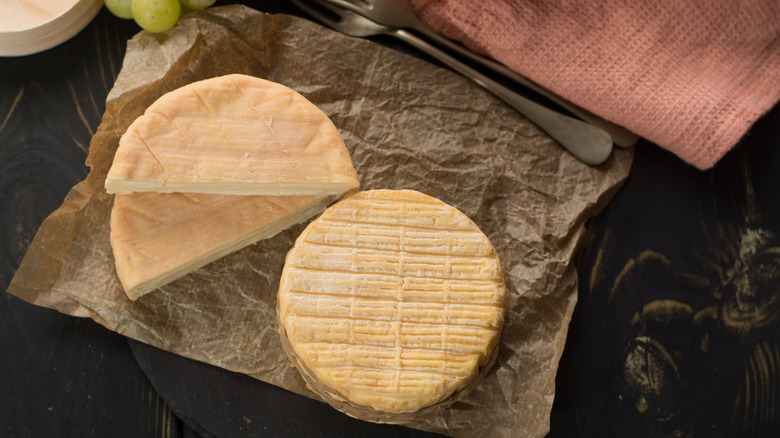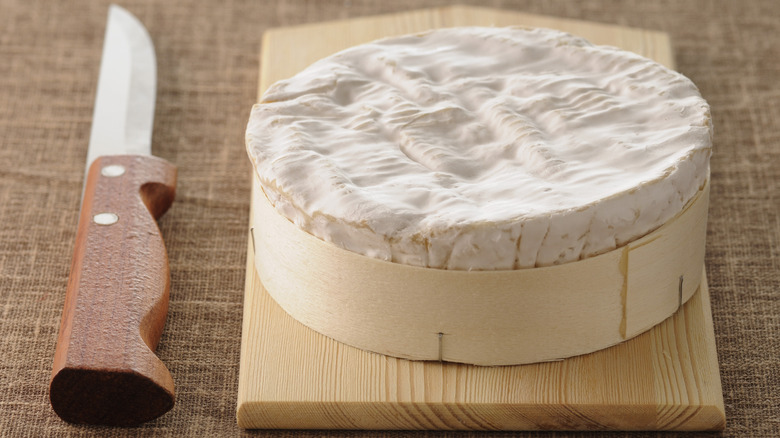The Sticky Difference Between Washed Rind And Bloomy Rind Cheeses
For all the debate surrounding cheese rinds — which ones shouldn't be eaten vs. which ones are actually delicious — they're one of the most important parts of a wheel of cheese. Whether a rind is formed naturally or helped by a covering of ash, it protects the ripening cheese inside and adds flavor.
When it comes to soft cheeses, you can actually tell how the cheese might taste by looking at the rind. A white, velvety, papery rind like the ones on cheeses including brie and camembert is called "bloomy," and it means the cheese is more likely to be mild, creamy and a little earthy in flavor. On the other hand, some cheese rinds are bright pink or orange in color and have a sticky texture. These cheeses — which are often smelly, too — are called "washed-rinds." The difference is not just rind-deep. The two different rinds are made from different cultures, and washed-rind cheeses actually taste different because of their sticky exterior.
Bloomy rinds and washed rinds make cheeses taste completely different
As cheeses ripen, molecules like proteins and fats break down and create new flavors and textures that'll be perfect on your cheese boards. In general, these reactions take place thanks to mold and bacterial cultures — many of which reside in carefully cultivated cheese rinds.
Bloomy rinds and washed rinds are made up of completely different species. Bloomy rinds are predominantly composed of one of two cultures: Penicillium camemberti, which is pale white in color and fluffy in texture, or Geotrichum candidum, which creates a wrinkly, brain-like appearance. As they age, these cheeses tend to take on more buttery, mushroom-like flavors, and they'll soften and develop a thin, gooey cream line right under the rind.
To produce a washed-rind cheese, an affineur, or cheese-ager, literally washes the cheese with a saltwater solution as it matures. This is actually the reason for the distinctive smell, as it promotes the growth of a bacteria called Brevibacterium linens. Flavorwise, these cheeses develop a rich, salty meatiness as their interiors become gelatinous and creamy. Of course, the rind is the most intense part — and, according to French etiquette, you should dig right in.

